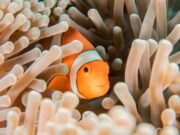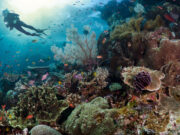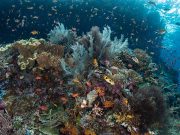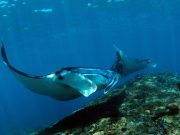Many animals use venom to protect themselves from predators and to catch prey. Some, like jellyfish, have tentacles, while others, like sea snakes, use fangs to inject their prey with venomous toxins.
For a long time scientists believed that an animal’s venom was consistent over time: once a venomous creature, always a venomous creature. However, through a close study of sea anemones, scientists have found that animals change their venom several times over the course of a lifetime, adapting the potency and recipe of their venom to suit changing predators and aquatic environments.
In a study published in eLife Science Magazine, Dr Yehu Moran of Hebrew University has and his team describe their spectacular findings. They studied the Nematostella sea anemones. They begin their life as tiny larvae and grow into animals measuring several inches long. While in the larvae stage, the Nematostella fall prey to larger fish but once mature, they become predators themselves, catching shrimp and small fish with their venomous tentacles.
While in the larvae stage, sea anemones produce uniquely potent venom that causes predators to immediately spit them out if swallowed. Later on, when the sea anemones grow big and become predators themselves, their venom adapts to their new lifestyle by producing a different kind of toxin, one best suited to catch small fish and shrimp. Over the course of a lifetime, as the Nematostella’s diet changes and they move from one aquatic region to another, they adapt their venom to suit their new needs and environment.
“Until now, venom research focused mainly on toxins produced by adult animals. However, by studying sea anemones from birth to death, we discovered that animals have a much wider toxin arsenal than previously thought. Their venom evolves to best meet threats from predators and to cope with changing aquatic environments”, explained Dr Moran.
Venom is often studied because the compounds it contains have the potential to be developed into new drugs. The jellyfish and coral relatives of Nematostella may also produce different venoms at different life stages. This means that there are likely to be many toxins that we have not yet identified in these animals. As some jellyfish venoms are very active on humans, and reef corals have a pivotal role in ocean ecology, further research into the venoms produced at different life stages could help us to understand and preserve marine ecosystems, as well as having medical benefits.

















